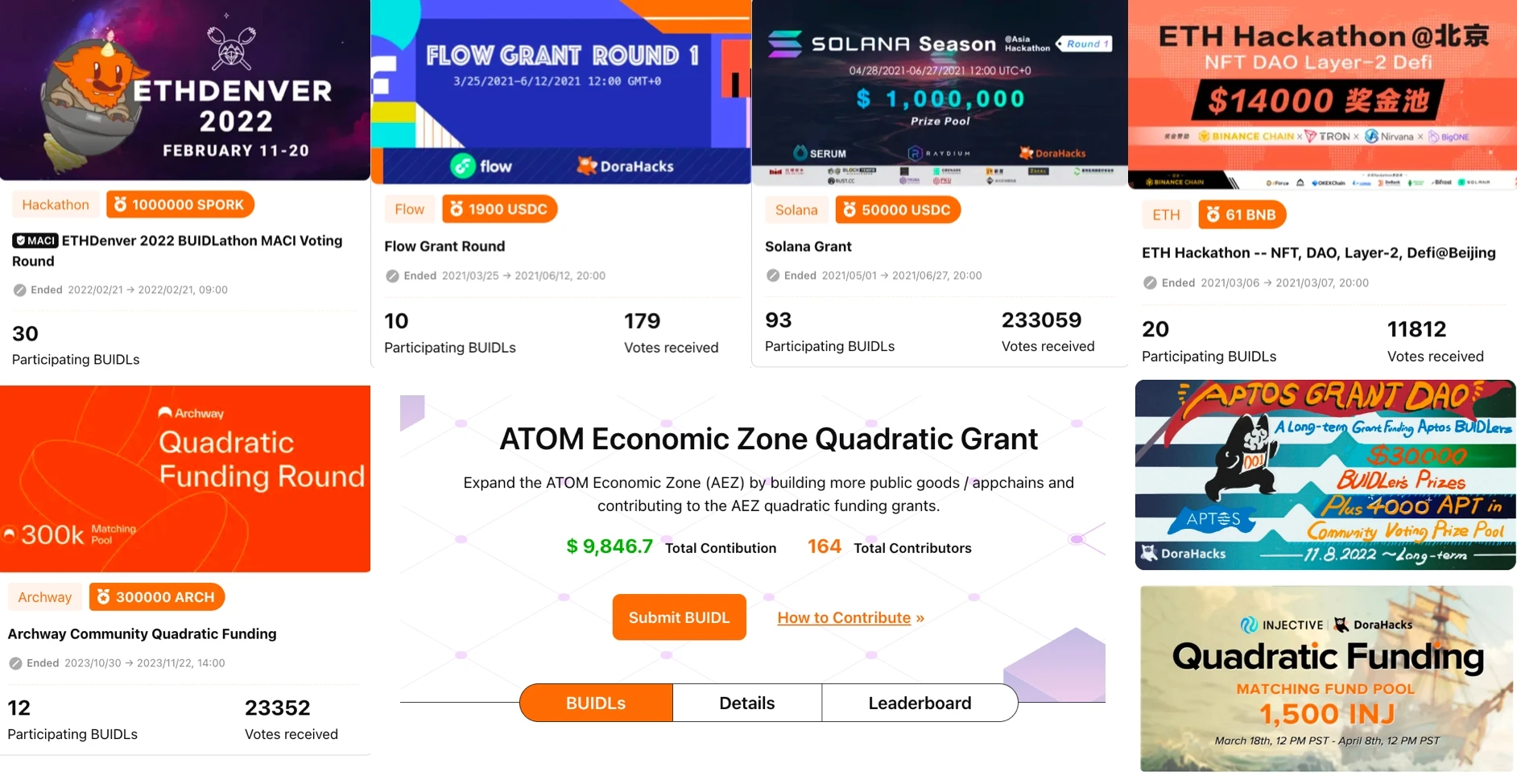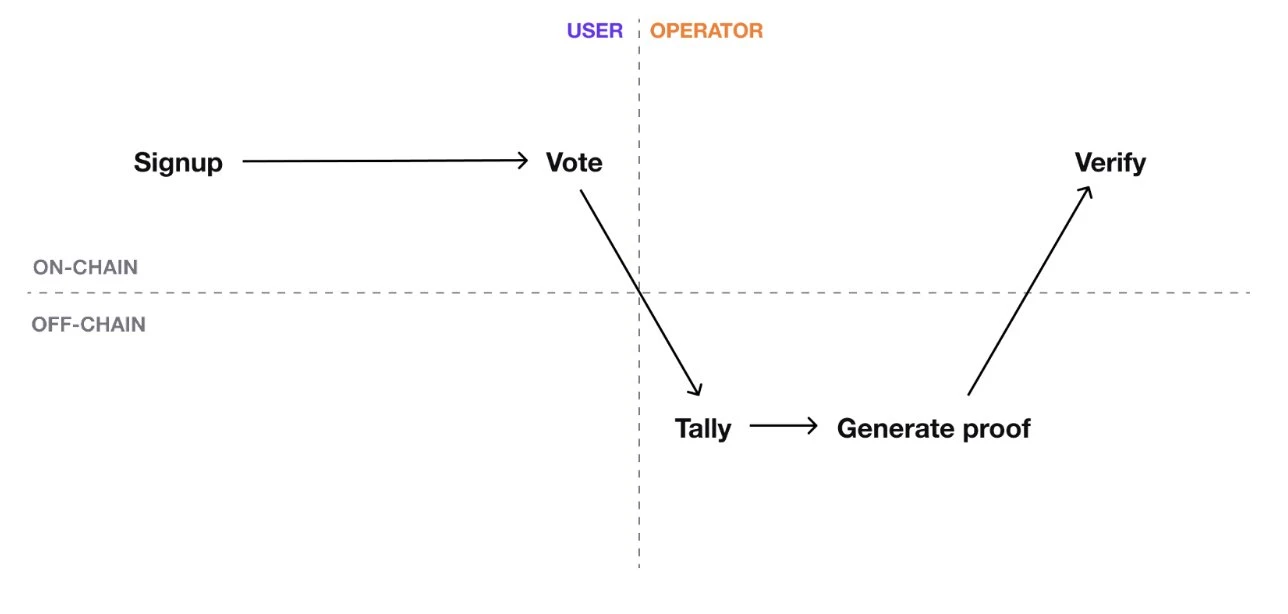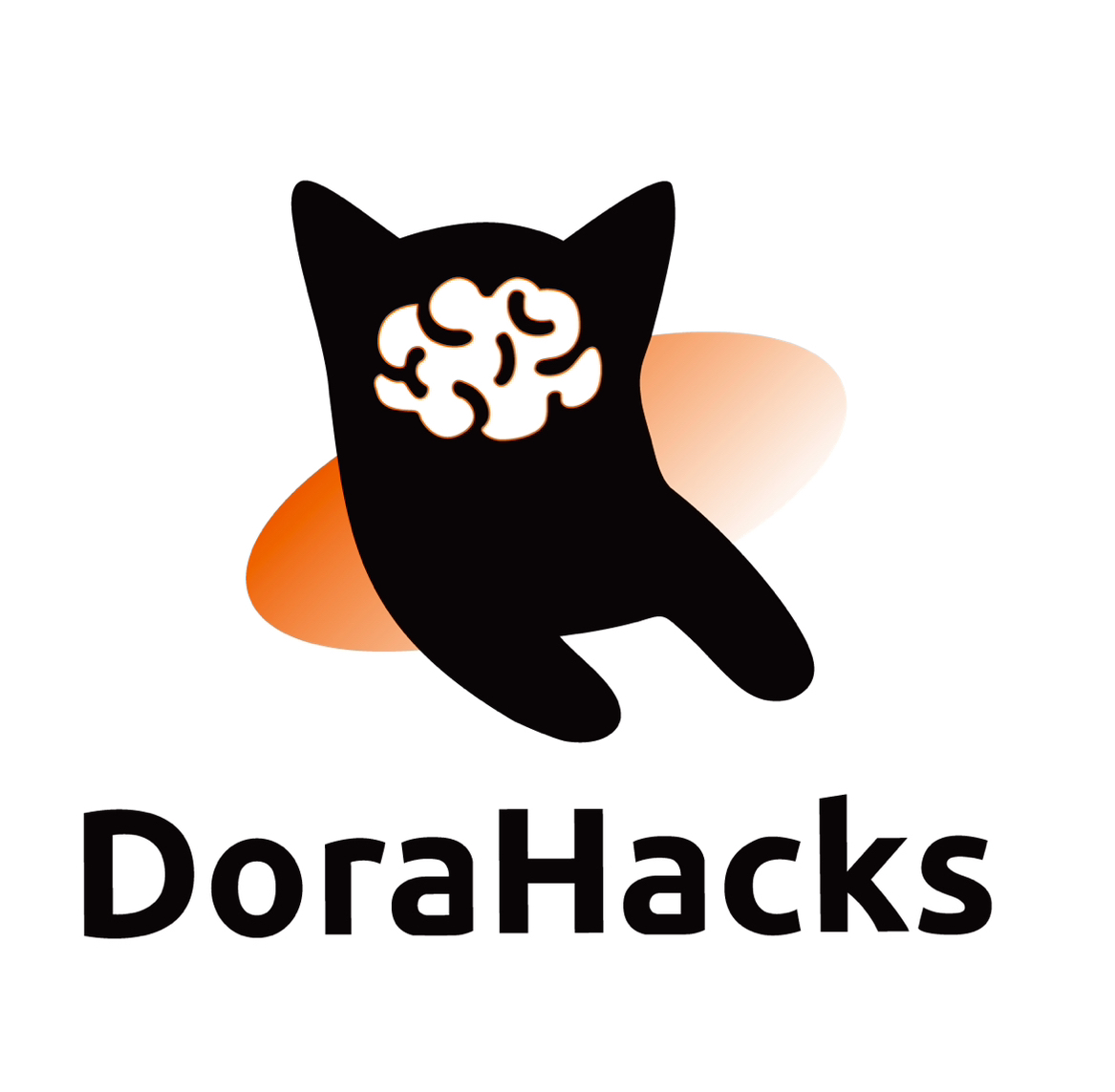As the worlds largest multi-chain developer incentive platform and hackathon platform, DoraHacks needs to allocate millions of dollars in funding to hackathons and open source developer communities every month. In this process, governance is an important part. Traditionally, there are two ways to award prizes: one is to rely on professional judges to decide the prizes; the other is to vote through the community and finally distribute the prizes according to the number of votes. However, the former may be out of touch with the community, and community members lack a sense of participation; the latter may evolve into a simple popularity contest, ignoring the value of the project itself.
In search of a method that can both reflect the will of the community and ensure the fairness of the selection, DoraHacks set its sights on on-chain quadratic voting. This method allows voters to cast more than one vote, but as the number of votes increases, the cost per vote will also increase, similar to the tiered electricity prices in life. This means that if a project, despite being niche, is of great significance to some community members, they can choose to invest more in exchange for a greater chance of winning the project.
The example at the beginning comes from DoraHacks quadratic voting example at the end of 2020 - the allocation of a $14,000 bonus pool in the ETH Hackathon@ Beijing. This voting method not only takes into account the number of votes, but also includes the tokens used for voting as a direct contribution to the project, so that each outstanding project receives a certain proportion of the bonus, while also receiving additional donations from the community. This vote took place on the BSC chain at the time. This initiative was not only the first attempt at on-chain quadratic voting, but also the first time quadratic voting was applied to offline blockchain community activities.
Since then, the DoraHacks team has continued to promote quadratic governance in the multi-chain world and has successfully applied it on mainstream non-EVM chains such as Solana, Aptos, TON, Cosmos Hub, Injective, Archway, Flow, etc. In 2022, at the ETHDenver BUIDLathon, DoraHacks supported an unprecedented offline quadratic voting event and continued to expand the participation of the global community in the subsequent online BUIDLathon. At present, as the quadratic governance platform and infrastructure with the most ecosystem support, DoraHacks has supported 32 Web3 ecosystems for on-chain quadratic funding, with a total of more than 300,000 community members participating.

Quadratic governance allows a large number of Web3 community members to participate in the construction of the ecosystem, and also provides important start-up funds and market opportunities for the early development of public goods in each ecosystem. In order to help more community members understand the process of quadratic governance and support high-quality projects in the ecosystem, DoraHacks recently launched the Voting Community Incentive Pool mechanism (Community Incentive Fund), using well-known Memecoins and NFTs in each ecosystem to encourage community members to actively participate in voting. Currently, in the two quadratic voting rounds of Injective Grant DAO and Aptos Grant DAO, voters will receive two popular memes (Memecoins), Injective Quant ($QUNT) and Aptos Gui Inu ($GUI), respectively. In addition, lucky voters will be selected using a device-independent quantum random number generator to receive rare NFTs. Through CIF, DoraHacks has turned quadratic funding and on-chain governance into an interesting process, changing the serious nature of on-chain governance and providing a new direction for the development of public goods funding.
Lets turn the topic back to on-chain governance. Even beyond the scope of Web3 Hackathon, the blockchain world itself has a lot of governance scenarios, and of course there is an urgent need for a more democratic and efficient voting method. DoraHacks found many areas in the early version of on-chain quadratic voting that need to be improved. Some of these problems are new problems brought about by the characteristics of blockchain, and some are chronic diseases of democratic governance mechanisms. After long-term practice and exploration, the DoraHacks team proposed a comprehensive solution to break down these problems one by one and launched a new quadratic governance infrastructure.
First of all, there are problems caused by the characteristics of the blockchain itself. First, blockchain wallet addresses are extremely easy to obtain, which makes the cost of Sybil attacks in on-chain voting extremely low. DoraHacks has developed a closed-source anti-Sybil attack check algorithm for this purpose. After each on-chain quadratic vote, there is generally a 3-5 day anti-Sybil attack check period. Voting addresses detected as Witches will be de-weighted in the bonus calculation (but donations entered through Sybil addresses will still be considered direct donations to the voted project).
Second, based on the blockchains broadcast mechanism, on-chain activities are traceable and verifiable. Although higher transparency may mean a higher degree of democracy for the community, it will also be more likely to breed collusion. For example, a candidate project in a hackathon can use certain rewards to guide more community members who are not familiar with the project to vote, and then exchange rewards based on the on-chain voting records afterwards; or some projects can also calculate the most cost-effective number of votes for themselves by analyzing the on-chain voting situation in real time. The best solution to this problem is currently the minimization anti-collusion mechanism (MACI), the specific details of which have been introduced and analyzed in previous articles, please see Pioneering Decentralized Governance: A Retrospective on DoraHacks MACI/aMACI Study and Implementation .

On the other hand, democratic voting itself still has many problems to be solved, the most notable of which is a new form of winner takes all. Taking hackathon as an example, if the bonus pool is allocated according to the number of votes for the project, even if it is a mechanism that suppresses majority tyranny, there is an extreme situation: if the number of votes for project A far exceeds that of project B (for example, 100,000 times), then B will hardly get any bonus from the bonus pool, while A will take away most of the rewards.
DoraHacks originally created the Quadratic Progressive Tax mechanism. Simply put, PT is a bonus distribution coefficient. Although a certain gap between the rich and the poor is allowed in the distribution of the bonus pool, this gap is strictly limited by the PT coefficient. For example, if the PT coefficient of a bonus pool is 10, the maximum bonus that the project with the first place vote can take away will not exceed 10 times that of the last place. On the other hand, there will no longer be a situation where a small team will get nothing, because at worst they can take away a bonus equivalent to 10% of the first place. The quadratic progressive tax significantly improved the extremely uneven distribution of early quadratic funding, and greatly improved the fairness and effectiveness of quadratic funding.
Of course, quadratic governance provides a new option for multi-chain governance models. DoraHacks is rapidly innovating in exploring and optimizing more effective governance models and governance technologies. Through effective governance mechanisms, resource allocation is optimized, and more participation and fairness are brought to the community. DoraHacks practice has proved that even in complex governance scenarios, innovative mechanisms such as on-chain quadratic voting and MACI mechanisms can effectively balance the interests of all parties and ensure the diversity of projects and the voices of small teams. These explorations are not only on the road to pursuing technological and governance innovation, DoraHacks has demonstrated the possibilities of the future blockchain world: a more democratic, transparent and inclusive decentralized ecosystem, and a more interesting and vibrant Web3 development path.
Related Reading:
Quadratic Governance: What’s Working and What’s Not?
Leading decentralized governance: DoraHacks’ MACI and aMACI practice review
Cryptographic protocol canaries to protect against quantum attacks
How do hash-based post-quantum digital signatures work? (Part 1)
How do hash-based post-quantum digital signatures work? (Part 2)










